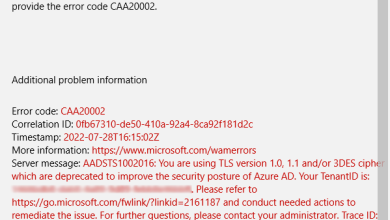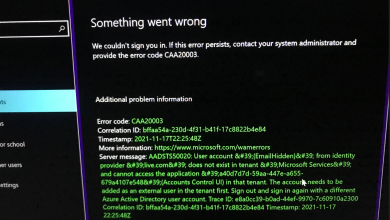3 Ways to Open Microsoft Excel in Safe Mode
If you’re having trouble opening an Excel sheet or if it’s frequently crashing, Microsoft Excel’s safe mode feature can resolve these issues and optimize your workflow.
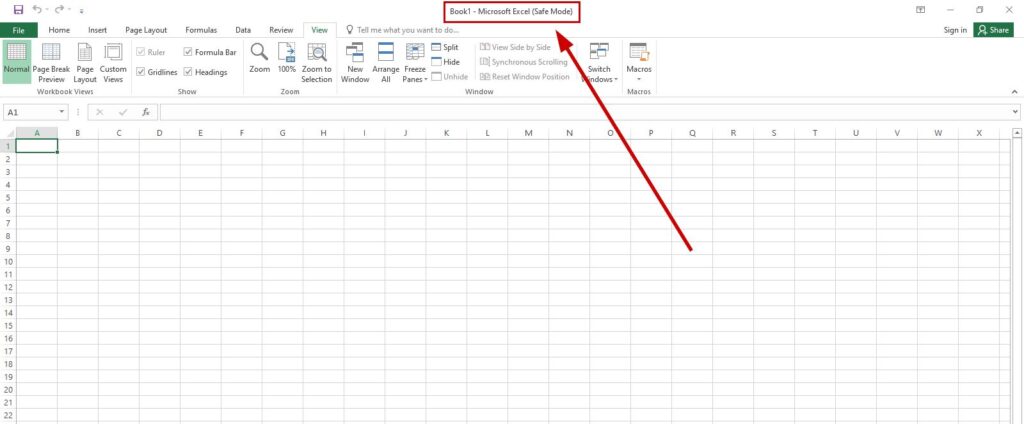
Not only this, Excel’s safe mode also allows you to identify the source of the problem so you can eliminate it at its root cause. The problem is usually caused by add-ins that interfere with the Excel files.
There are three methods to access Excel’s safe mode, and all of them require no prior technical knowledge. Every method is pretty straightforward if you have a working laptop or PC.
All three of them are explained step-by-step below:
Method 1: Using the Keyboard Shortcut (CTRL key)
This is by far the most time-saving method to access Excel’s in-built safe mode. All you’ll have to do is open Excel while pressing the CTRL key.
Here are the steps to make this more clear:
- Find the shortcut icon for Excel on your Desktop, Taskbar, or Start Menu.
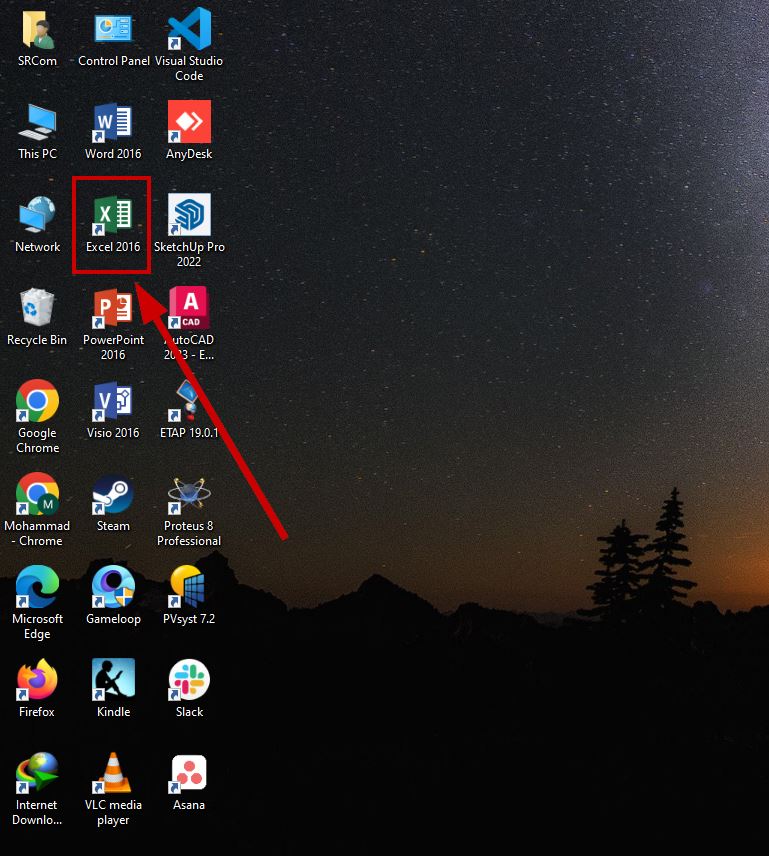
- Press and hold down the CTRL key and double-click on the Excel shortcut icon. Only let go of the CTRL key once you see a confirmation window open in the background.
- Click Yes on the confirmation prompt.
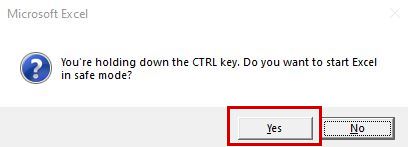
The words Safe Mode written next to the file name indicate that you have successfully opened Microsoft Excel in safe mode using the CTRL key.

Method 2: Using a Command Line
Another method you can use to access safe mode on Excel is by entering a command in the Run dialog box, as follows:
- Search for Run in the Windows search bar and click on its shortcut icon to open the application. Alternatively, you can also use the Window + R shortcut to open it.
- Type excel /safe in the Run dialog box.

- Click OK.
- Once done, Microsoft Excel will start running in safe mode.
Method 3: Making a Separate Excel Safe Mode Shortcut
To avoid using the CTRL key and command line every time, you can create a separate Excel safe mode shortcut for the application to always run in safe mode.
Here’s how to do that:
- Go to the Excel icon shortcut from your Start menu, right-click on it, and then click Open file location.
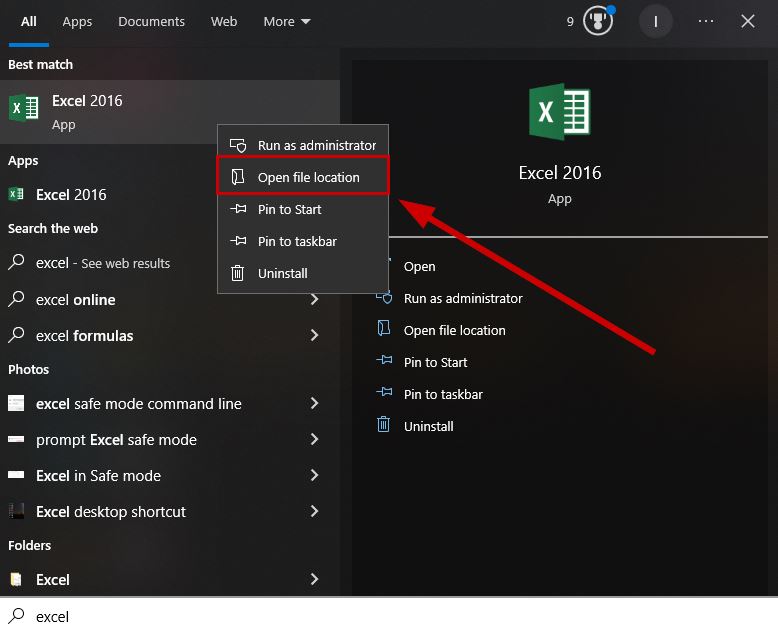
- In the file location, there will be an icon for Excel.
- Make a copy of this icon, go to your desktop, and paste it there.
- Right-click on the icon you have just pasted on your desktop and click on Properties.

- Once in properties, go to the Shortcut tab and click on the Target input bar.
- Go to the end of the value and write /safe after pressing the spacebar once. The final target line should look like the following:
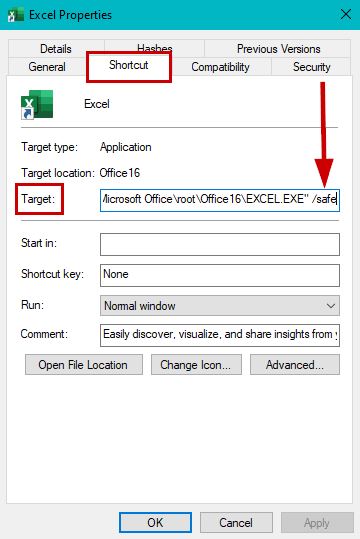
- Additionally, from the General tab, you can change the file name for the future.
- Click OK to save all your changes.
- Now, an Excel shortcut on your desktop will allow you to open the application in safe mode whenever desired.
How to Exit Excel Safe Mode?
Disabling safe mode in Excel is straightforward. Just close the Excel files in safe mode from your taskbar by clicking the cross at the top right.
Now, opening an Excel file will launch it normally, not in safe mode.
Limitations of Excel Safe Mode
When using Microsoft Excel in safe mode, you lose access to some features available in normal mode.
Here are the features compromised when operating in Excel’s safe mode:
- You cannot load any Excel add-ins or additional features.
- You won’t be able to automatically access recovered documents.
- Your ability to create or access restricted documents will be limited.
- The Autocorrect list neither loads nor saves any changes.
- The toolbar doesn’t load as in normal mode, and it won’t save any customizations.
While you may lack some functions in safe mode, all basic Excel functions will remain available to assist with your work.
If you cannot open Excel in safe mode or complete a specific step, please let us know in the comments below, and we will provide a solution.

